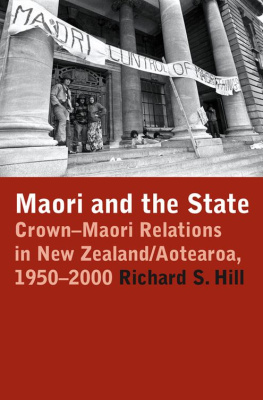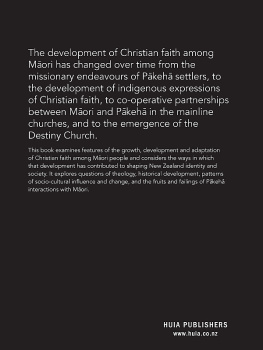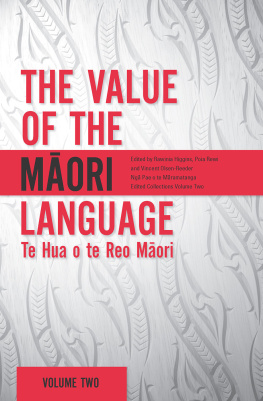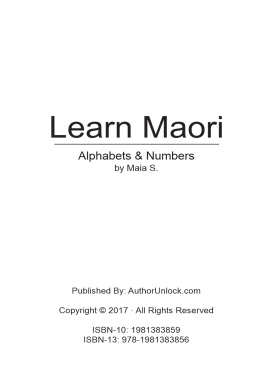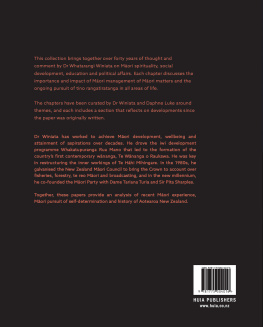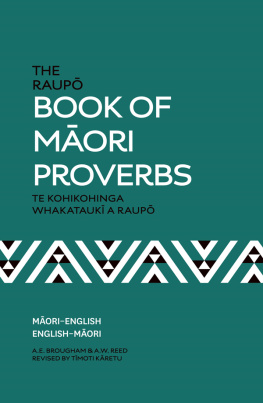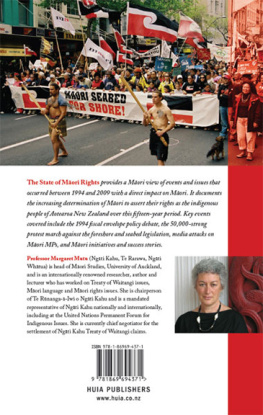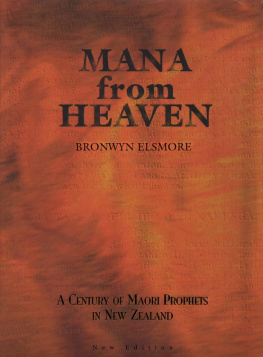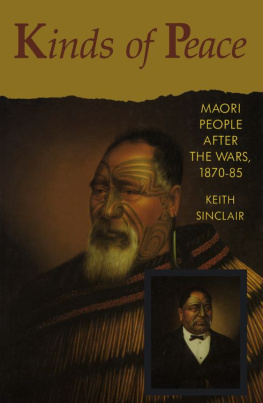Richard S. Hill - Māori and the State : Crown-Māori relations in New Zealand/Aotearoa, 1950-2000
Here you can read online Richard S. Hill - Māori and the State : Crown-Māori relations in New Zealand/Aotearoa, 1950-2000 full text of the book (entire story) in english for free. Download pdf and epub, get meaning, cover and reviews about this ebook. City: Wellington N.Z., year: 2010, publisher: Victoria University Press, genre: Politics. Description of the work, (preface) as well as reviews are available. Best literature library LitArk.com created for fans of good reading and offers a wide selection of genres:
Romance novel
Science fiction
Adventure
Detective
Science
History
Home and family
Prose
Art
Politics
Computer
Non-fiction
Religion
Business
Children
Humor
Choose a favorite category and find really read worthwhile books. Enjoy immersion in the world of imagination, feel the emotions of the characters or learn something new for yourself, make an fascinating discovery.
- Book:Māori and the State : Crown-Māori relations in New Zealand/Aotearoa, 1950-2000
- Author:
- Publisher:Victoria University Press
- Genre:
- Year:2010
- City:Wellington N.Z.
- Rating:3 / 5
- Favourites:Add to favourites
- Your mark:
- 60
- 1
- 2
- 3
- 4
- 5
Māori and the State : Crown-Māori relations in New Zealand/Aotearoa, 1950-2000: summary, description and annotation
We offer to read an annotation, description, summary or preface (depends on what the author of the book "Māori and the State : Crown-Māori relations in New Zealand/Aotearoa, 1950-2000" wrote himself). If you haven't found the necessary information about the book — write in the comments, we will try to find it.
Richard S. Hill: author's other books
Who wrote Māori and the State : Crown-Māori relations in New Zealand/Aotearoa, 1950-2000? Find out the surname, the name of the author of the book and a list of all author's works by series.
Māori and the State : Crown-Māori relations in New Zealand/Aotearoa, 1950-2000 — read online for free the complete book (whole text) full work
Below is the text of the book, divided by pages. System saving the place of the last page read, allows you to conveniently read the book "Māori and the State : Crown-Māori relations in New Zealand/Aotearoa, 1950-2000" online for free, without having to search again every time where you left off. Put a bookmark, and you can go to the page where you finished reading at any time.
Font size:
Interval:
Bookmark:
To my parents, Jean and Herbert
This book examines the principal interrelationships between the Crown and Maori in New Zealand/Aotearoa over the second half of the twentieth century. It complements my earlier examination, in State Authority, IndigenousAutonomy, of CrownMaori relations in the first half of the century. Ever since the British Crown annexed the islands of Aotearoa in 1840, Maori have continuously asserted their distinctive politico-cultural identity, despite the relentless pressures of colonial and post-colonial policies especially those aiming at the eventual assimilation of Maori into western ways of seeing and doing. Assimilationist policies intensified in the 1950s and 1960s. Under the pressure of the Maori Renaissance, however, from the 1970s policies and goals based upon biculturalism began to replace assimilationist measures and aims (although Crown motivations were and remain problematic). For this reason, some of the books subject matter, while examining the relationship between the same parties, differs greatly from that of its predecessor.
There is another key difference, too. Until the middle of the twentieth century, Maori were mostly rural dwellers leading lives quite different and separate from the majority of those New Zealanders of European descent who are now generally called pakeha. Then came mass migration to the large towns and cities, a phenomenon which had major implications for the modes of interaction between the state and Maori institutions and leaders. But even during the height of urbanisation and government assimilation policies, and despite considerable intermarriage with pakeha, Maori continued to organise their lives collectively. They maintained old ways, and created new ones, in an ongoing struggle to preserve and enhance their culture. They sought Crown recognition that their status as tangata whenua, the (original) people of the land, required a special relationship with the state one which honoured the rangatiratanga, or autonomy, accorded to Maori by the Crown in the Maori-language version of the Treaty of Waitangi.
State Authority, Indigenous Autonomy was interpreted in some quarters as a work of advocacy for Maori autonomy. My purpose in canvassing the
It should be noted that, as I am primarily an historian of state institutions, this book focuses on the way the Crown attempted to contain, control and assimilate Maori, and the way Maori have responded. In my assessment, Maori never accepted that Crown sovereignty precluded the possibility of running their own affairs in their own ways. At least until the 1970s, however, the Crown decreed that British/pakeha culture, ways of living and modes of organising were the norms to which all citizens needed to aspire. There was a certain accommodation of Maori organisational and cultural forms by the Crown, but these were essentially seen as temporary or transitional arrangements pending an eventual full assimilation of Maori. After assimilation policies were officially abandoned, moreover, Maori leaders and scholars frequently asserted that replacement policies did not provide meaningful recognition of rangatiratanga.
To contain the huge subject of Maori aspirations and Crown policies over half a century of intense discourse and activity, this book focuses on interactions between Crown and Maori at an organisational level. There were many indigenous institutions involved, from local to national, and all of them like the state itself experienced internal contestation. This study, however, covers internal state and Maori debates and conflicts only where they impact on the contours of the key relationships between the two broad parties to the signing of the Treaty of Waitangi the official and the indigenous.
This is not to say that the book is based upon the Treaty of Waitangi or the great amount of scholarship focused on it (and nor was StateAuthority, IndigenousAutonomy, pace some of its reviewers). However central the Treaty to Maori claims and aspirations, CrownMaori relations reflect circumstances typical of settler colonies and their successor states. Government policies aimed at suppressing, appropriating and assimilating the political economy and culture of indigenous peoples, and ongoing but adaptive struggle by indigenes for self-determination, are integral to the history of colonialism and post-colonialism. Marginalisation of political and cultural indigeneity in New Zealand would have occurred whatever the colonial regime, although the exact configurations of the Crowns policies and actions and Maori responses to them were shaped by circumstances specific to the country. While most literature on Crown Maori relations is Treaty-related, then, the analyses in this book are not posited upon that 1840 document or its long history.
It is sufficient here to note with regard to the events of 1840 that Maori and Crown had differing perceptions of what was being signed. Since that time, Maori have generally focused on Article Two of the Treaty, the one which promised them rangatiratanga, a term generally seen as representing some sort of autonomy or ability to run their own affairs, but which in the English-language version was rendered as the full exclusive and undisturbed possession of land and other properties. The Crown has always, in contrast, focused on Article One, under which Maori ceded to the Queen absolutely and without reservation all the rights and powers of Sovereignty kawanatanga (governorship) in the Maori version. In the states eyes, Article One provided the indivisible Crown sovereignty that was considered suitable for a settler state. Whatever this article implied to Maori, the Crown considered in early 1840 that it had taken unfettered constitutional control of the resources and people of New Zealand.
While the Treaty of Waitangi has remained the symbolic document of the CrownMaori relationship, the two broad interpretations of the Treaty have never been reconciled mirroring the tensions and conflicts integral to all colonisation projects and their post-colonial inheritances. But reconciliatory arrangements have always been sought by the parties involved, at least on an agreement to disagree basis, and the Treaty has proven a useful device for both Crown and Maori in pursuit of sometimes similar and sometimes differing aims and, in more recent times, in pursuit of constitutional or other arrangements which might possibly satisfy both.
I would like to thank those scholars working in the Treaty of Waitangi reconciliation processes who first turned my mind to the neglected subject of CrownMaori relations in the twentieth century, and the Marsden Fund, which has supported my research focus on rangatiratanga and helped make this book possible (including through a publishing grant). I owe much gratitude to many people who have discussed this and related subjects with me ever since, especially various scholars who have been based at the Stout Research Centre for New Zealand Studies from time to time. I would like to thank, in particular, two members of the Centres Treaty of Waitangi Research Unit (TOWRU), Maureen West and Gwyn Williams; Dr Williams offered many helpful suggestions on shaping this book, undertook its editing and prepared its bibliography and index. I am also grateful to Sonja Mitchell and Alice Miller for their research contributions, and to Lana Le Quesne and Louise Grenside, the current TOWRU and Stout Research Centre administrators. I would like to thank Fergus Barrowman, Heather McKenzie and the rest of the team at Victoria University Press for their warm support and assistance, and Sarah-Jane McCosh who typeset the book.
The Director of the Stout Research Centre, Professor Lydia Wevers, has been unfailingly supportive, as has another friend and colleague (who joined the Stout in 2008), Professor James Belich. I can think of no more stimulating research environment than the Stout Research Centre. My life has also been enlivened, and my work possibly enhanced (and perhaps occasionally impaired), by Wellingtons traditional Friday night gathering of scholars in convivial surroundings. I am fortunate to have a great deal of support from the various members of my family, although they are scattered far and wide, and I owe a special debt of thanks to my wonderfully patient and supportive partner Nicola Gilmour.
Font size:
Interval:
Bookmark:
Similar books «Māori and the State : Crown-Māori relations in New Zealand/Aotearoa, 1950-2000»
Look at similar books to Māori and the State : Crown-Māori relations in New Zealand/Aotearoa, 1950-2000. We have selected literature similar in name and meaning in the hope of providing readers with more options to find new, interesting, not yet read works.
Discussion, reviews of the book Māori and the State : Crown-Māori relations in New Zealand/Aotearoa, 1950-2000 and just readers' own opinions. Leave your comments, write what you think about the work, its meaning or the main characters. Specify what exactly you liked and what you didn't like, and why you think so.

